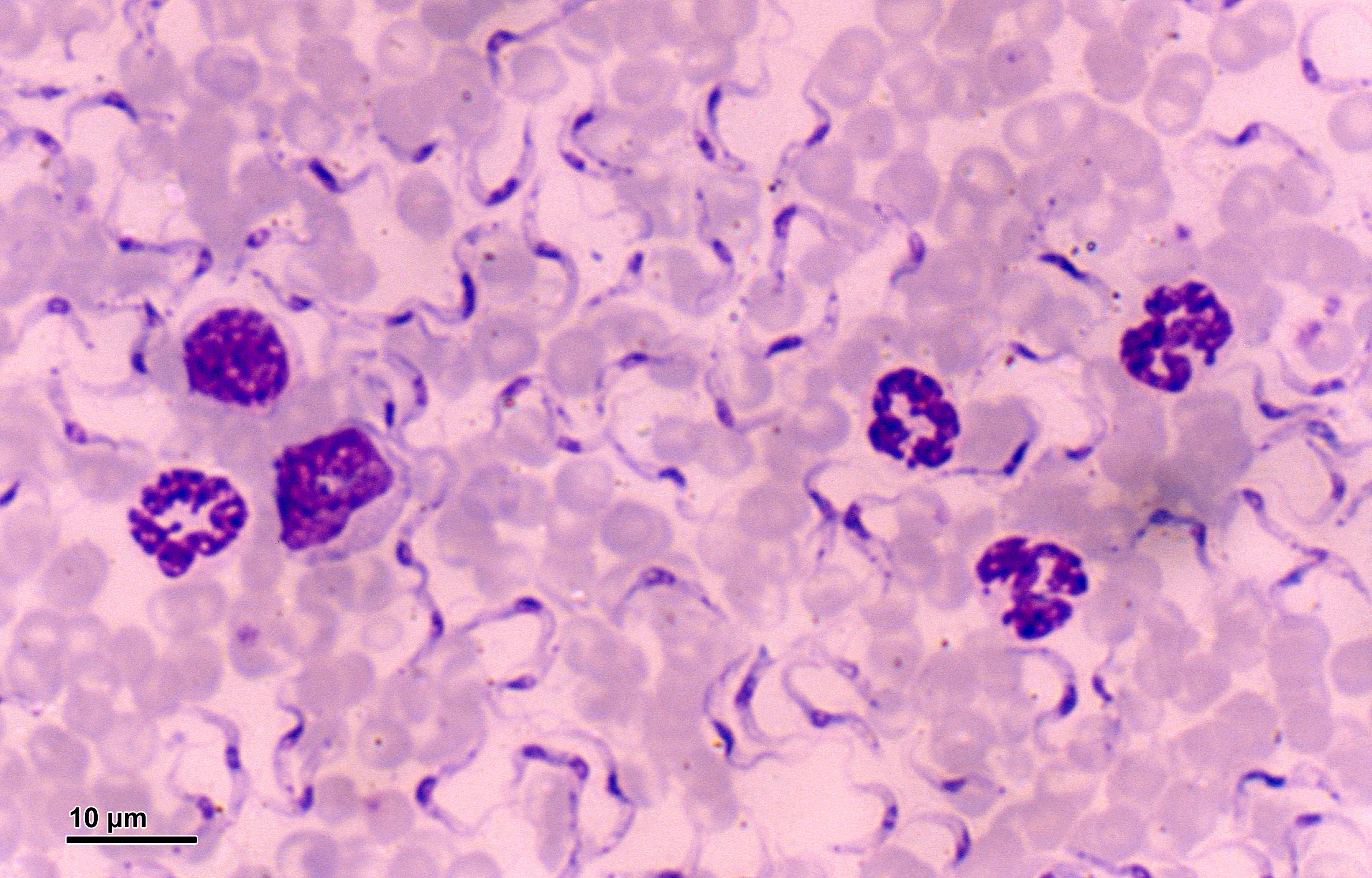Trypanosoma gambiense and Trypanosoma rhodesience
Introduction
- gambiense causes disease called sleeping sickness in man. Pigs, cattle and dogs may also get infected. Transmission is through Glossinapalpalis.
- rhodesience causes Rhodensiense disease or east African sleeping sickness in man and transmitted by Glossina morsitans.
T. brucei equiperdum
Introduction
- Indistinguishable from evansi but are slightly smaller and have less mortality.
- Causes general disease of horse called ‘Uourine’ (Arabic word meaning unclean (dirty) or equine syphilis or breeding paralysis.
- Transmitted through goitus. In rare cases, transmission is through biting flies and by infective discharges contaminating mucous membrane.
- Incubation period : 2-12 weeks.
- Clinical case usually progresses through three phases
1st phase (stage of edema)
- Starts with mucoid, vaginal or urethral discharge, degree of nymphomanta and mild fever with oedema of genitalia.
- Prepuce and scrotum are swollen in case of stallion. May extend under belly.
- In mare, vaginal mucosa is hyperaemic and ulcers may be present.
- Deep pigmentation of circumscribed areas of Vulva and penis. Last 4-6 weeks.
- In severe case, there is frequent micturition and even abortion in pregnant mares. Appetite is not affected.
2nd phase (Urticarial phase)
- Appears after 4-6 weeks of first phase.
- Oval or spherical plaques of about 3 cm or more in diameter appear on skin on sides of body, especially in flank region. They are pathognomonic finding of disease and classically referred to as ‘ dollar spots’ since they appear as if a silver dollar or a rupee coin has been inserted under skin.
- Anemia and animal get emaciated.
- Inguinal lymph glands are enlarged
- Intermittent fever is present but the appetite remains normal.
3rd phase (Phase of paralysis)
- Incoordination and unilateral paralysis affecting hind limbs, lips, nostrils and ears.
- Complete paralysis and recumbency in later stage, followed by death.

Diagnosis
- Based on pathognomonic symptoms
- Defection of organism in smears from mucous membrane of genitalia and urticarial swellings.
- Animal inoculation: Inoculation of blood into laboratory animals, in case of negative results in smears for parasite.
Treatment and control
- Antrycide and suramin is drug of choice
- For control, ‘test and slaughter’ policy is recommended. In cases, where it is not feasible, affected animals may be castrated to avoid spread of infection.